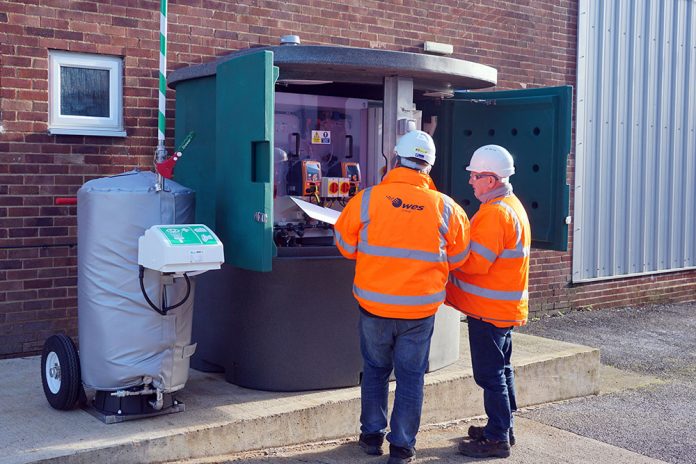Eutrophication is a significant issue and one that is only going to get worse. Industry regulator Ofwat has challenged water companies to deliver more cost-effective and efficient solutions than their current framework designs allow. So, how can the water industry and chemical dosing manufacturers meet growing demands? Graham Ward of WES suggests a way forward.
Why the growing demand for phosphorus removal?
Phosphorus removal standards are becoming increasingly stringent as regulators seek to minimise the problem of eutrophication across the UK’s lakes, rivers and other surface waters. As well as being a strong focus in AMP7, the UK water industry’s Asset Management Period for 2020 to 2025, phosphorus removal is being reinforced by the Environment Agency’s Water Industry National Environment Programme (WINEP).
As a result of this increased focus on phosphorus removal, chemical dosing, which has traditionally been used on larger sites, has begun to be used on smaller sites as well. This has led to an increase in demand for the solution across the industry as a whole. However, with Ofwat’s challenge to deliver cost-effective solutions, chemical dosing can only be delivered efficiently if water companies, contractors and the supply chain work in partnership with manufacturers to create simpler, more standardised systems.
A shift in perspective
Chemical treatments offer an economical means of removing phosphates from wastewater and have a positive result for the environment. However traditionally, water companies have preferred to buy large and often over-engineered dosing systems that have been tailored to a bespoke set of needs. These solutions come at a cost, taking longer to manufacture than more standardised, small to medium sized systems. For dosing systems to be produced in larger numbers and at lower prices, without compromising on performance and integrity, radical change is therefore needed.
By applying standardised designs and production practices, manufacturers can optimise operational efficiency, reduce lead times and achieve cost reductions, all without any impact on the consistency, quality and safety of products. The current optioneering exercise could be used by the water industry to engage with colleagues and partners in exploring how they might adopt such standardisation and value engineering. The rewards of working together could include mutual economic benefits, better dosing systems and wider improvements in phosphorus reduction.
Standardised dosing systems – things to consider
When thinking about standardising dosing systems, some key things to consider include: the product’s size, where it is likely to be used, the variety of dosing chemicals that it can cope with and its storage tank capacity. In addition for small, medium and large applications alike, the range of dosing rate settings that will be available on it and the telemetry it will be fitted with, to enable immediate reporting of any failures. All of these features and functions also need to be delivered as a complete, pre-assembled and pre-tested package which is quick and easy to install and commission.
What a standardised chemical dosing system looks like
Packaged systems like the DS1500 from WES can easily slot into the industry’s current thinking process around simplification and standardisation of chemical dosing units. Ideal for indoor and outdoor applications requiring small to medium capacity, this compact and tough product is fully enclosed within a weatherproof, rotationally moulded structure.
For enhanced safety, it features separate, lockable dosing and fill/control compartment doors, automatic leak detection cut-off, splash screens and an integral bund. A vertical tunnel through the bund conceals and protects power and signal cables, as well as dosing lines. Its construction material options allow for use of different dosing chemicals. The system’s integrated design includes a 1,700-litre chemical storage tank with a working volume of 1,500 litres, designed to take 1,000-litre deliveries from commercial chemical suppliers. It can also be filled by pumping from an on-site IBC (intermediate bulk container).
According to their preferences and applications, customers can choose from a variety of digital dosing pumps arranged in single or duty/standby set-ups. Dosing rates can be entered directly via the screen of a user-friendly interface. With very wide turn-down ratios and no need for complex stroke rate calculations, the system offers plug-and-play simplicity. Dosing rate, over a range from 0.025 to 150 litres per hour, is simple to control manually or can be automatically governed via the pumps’ input/output connections. Further options include automatic duty/standby pump changeover and telemetry functions.
The DS1500, and similar packages, can be readily bought or hired from WES, which operates the UK’s largest chemical dosing hire fleet. Fully constructed and tested in the factory, they are built for rapid deployment on site. Their design points to a standardised, simplified approach which, if supported by industry collaboration, can address the dosing system manufacturing capacity challenge.
For further information, visit www.wes.ltd.uk.
Graham Ward is the Sales & Marketing Director of WES Ltd.



